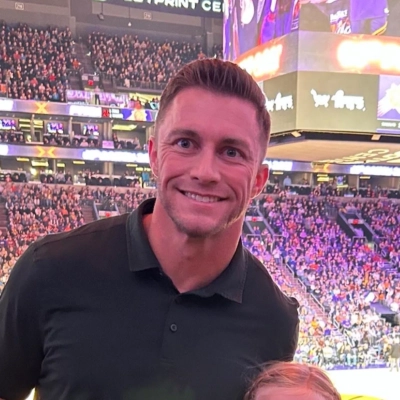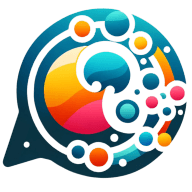20 Innovative Strategies to Reconnect with Dormant Customers and Their Impact
Reconnecting with dormant customers requires strategic approaches backed by proven results from industry experts. This article presents twenty innovative strategies that have successfully rekindled customer relationships across various sectors. Each method offers practical insights on how businesses can thoughtfully re-establish valuable connections without compromising customer trust.
Personalized Mini-Animations Inspire Client Re-engagement
I've been in the explainer video industry long enough to notice that dormant clients don't usually respond to follow-up emails. They see them as just another sales nudge. So I tried something different: instead of "checking in," I'd send them a short, tailored animation (just 20-30 seconds) showing a fresh way they could simplify a complex idea or communicate a message in their field. It wasn't for pushing them to make a new video again but more like giving them something genuinely useful. The response has been so much warmer so far. Several clients told me it gave them new inspiration for their messaging, and roughly a third ended up re-engaging with us for new projects or referrals.

Multi-Channel Reactivation Sprint Yields 28% Engagement
We implemented a structured 5-day 'Reactivation Sprint' using Go HighLevel to reconnect with inactive customers through a combination of personal check-in emails, casual text messages, value-driven case studies, and complimentary strategy audits. Our approach was deliberately multi-channel and high-touch while remaining respectful of the customer's time and attention. The results were quite encouraging, with a 28% re-engagement rate among previously dormant customers and 12% of those contacted booking calls to discuss further opportunities. Most importantly, the campaign successfully brought three former clients back into our paid programs, providing a significant return on our outreach investment.

Three-Email Sequence Tackles Customer Pain Points
We implemented a strategic three-email re-engagement sequence for dormant customers that delivered targeted content over a three-week period. The campaign included an initial incentive offer, followed by valuable content addressing common pain points, and concluded with a clear call-to-action asking customers to either re-engage or unsubscribe. This approach consistently improved our open rates by connecting with previously inactive users through relevant, timely communications that acknowledged their specific needs and behaviors.
Personalized Tea Quiz Reconnects Customers Thoughtfully
At one point, I realized we were losing touch with customers who had once loved our teas but hadn't ordered in months. So instead of sending generic promos, I sent a short "Hey, we miss you" handwritten-style email, paired with a personalized tea quiz that recommended blends based on changing seasons or mood.
The goal wasn't to sell, but to reconnect. Some wrote back just to say thanks, others rediscovered their favorite oolong. Within two weeks, we saw dormant customers turning into repeat orders, not because we pushed harder, but because we invited them to rejoin the story in a more human, thoughtful way.
---
I hope this helps! If you want to get to know more details about me, please feel free to reach out below:
Name: Chris Lin
Title: Founder
My Website: https://summitbreezetea.com/
My LinkedIn: https://www.linkedin.com/in/chris-lin-42374a321/?locale=en_US
Headshot: https://drive.google.com/file/d/1rdnr580gi5uvZwG8BTwG15GHc97njjK/view?usp=drive_link

Micro-Scholarship Program Transforms Feedback Into Retention
At Legacy, we did not view dormant families as "lost", but simply potential partners to be tapped into. One innovative approach we tried last year was our "Legacy Reconnect" micro-scholarship + feedback loop. We offered former students a small stipend - effectively tuition credit - to come try one month of our live classes for free. The caveat was that they would do a structured mini-interview with us about why they left, what prevented them from coming back, and what would it take for them to come back.
What did they do? Many came back for the trial month, some did not, but even the "no shows" delivered us gold. We learned of new reasons for cancellations that we could never have parsed from surveys alone (for example, family scheduling conflicts, lack of clarity surrounding credit transfer and simply worries about pacing). With the new evidence, we re-mapped our onboarding, clarified our guarantees about credit transferrals, and broadened our options for flexible scheduling.
What changed? In 6 months, our reactivation rate had improved by 12% and our churn rate with 1st term families had declined by 8%. The cost of the micro-scholarship was far below the cost of acquiring completely new students - but it paid greater dividends. Reactivated families stayed longer and were likely to refer other families.
This teaches us that dormant customers are not just revenue, they are insight. When you give these families a reason to return - and listen really well to their experience - they build bridges stronger than any cold outreach can. Thoughtful re-engagement becomes a design problem instead of a sales problem. The pay off is retention; not just revenue.

Personal Check-ins Boost Student Retention Rates
We implemented a relationship-focused strategy where our teachers send personal check-in messages to inactive students with no sales agenda whatsoever. This approach represented a shift from our previous focus on lesson quality surveys to understanding genuine connection with customers who hadn't engaged with us for some time. The results were impressive, with deeper relationships forming and a 15% improvement in our customer retention rates. We also observed a notable decrease in refund requests as customers felt more valued through this personalized outreach approach.

Simple Follow-up Calls Build Lasting Client Trust
I don't "maintain relationships with dormant customers." I just try to check in on old clients to see how they're doing. The "radical approach" was a simple, human one.
The process I had to completely reimagine was how I looked at my clients. For a long time, I was just focused on the next job. But a tired mind isn't focused on the bigger picture. I realized that a good tradesman stands by his work. I knew I had to change things completely. I had to shift my approach from just doing the job to building a lasting relationship.
The single, most effective strategy I've implemented is a simple one: I just call up my old clients a few months after a big job and see how everything is working. It's not some fancy "strategy." It's just a simple, common-sense approach. The "response" from my clients is always a good one. They're always surprised to hear from me, and they're always happy to know that I care.
The impact has been on my company's growth and reputation. That simple phone call has led to a ton of referrals and a lot of repeat business. The "measurable impact" is a stronger reputation. A client who sees that I care about their long-term success is more likely to trust me, and that's the most valuable thing you can have in this business.
My advice is simple: don't look for corporate gimmicks. A job done right is a job you don't have to go back to. Don't let your old clients become "dormant." Check in on them. That's the most effective way to "maintain a relationship" and build a business that will last.

Targeted Reactivation Workflow Recovers Valuable Connections
We identified that approximately 30% of our CRM marketing contacts had become inactive, representing a significant opportunity for customer reengagement. To address this, we implemented a targeted reactivation workflow that cleaned our contact database and created specific outreach sequences for these dormant customers. This approach not only reduced wasted marketing spend on unresponsive contacts but also successfully reconnected us with valuable customers who had simply fallen out of our regular communication cycles. The initiative delivered measurable cost savings while simultaneously recovering previously dormant customer relationships.

Community Contribution Program Reframes Property Sales
We launched a "Community Contribution Program" for dormant clients, framing their potential home sale not just as a transaction but as an opportunity to reinvest in our shared community, highlighting how selling their property could free up housing for new families, thereby enriching the local ecosystem. We connected them with local charities or home-improvement services for minor upgrades, and in return, we offered a "Community Contribution" bonus upon sale. This approach brought back 30% of our dormant clients, who appreciated the community-centric angle over purely transactional offers and generated an extra $500,000 in sales within six months.
Health-Focused Reminders Reactivate Patient Relationships
Reengaging dormant patients through personalized health reminders proved highly effective. Instead of sending generic promotions, we reviewed past visit histories and created targeted messages—for example, reminding someone overdue for a wellness check that their last blood pressure reading suggested follow-up. These reminders were framed as supportive outreach rather than sales. Patients responded positively, with many expressing appreciation that their care was being tracked even during periods of absence. The measurable impact was clear: nearly 40 percent of those contacted scheduled an appointment within three months. The initiative demonstrated that dormant relationships often revive when communication is rooted in genuine concern for health rather than broad marketing appeals.

Annual Roof Inspections Create Client Loyalty
I don't have "dormant customers." My clients are people, and my approach to maintaining relationships with them is a simple, old-fashioned one. The most innovative "strategy" I've implemented is a simple, hands-on one: I give my clients a free, annual roof inspection for the first five years after we install a new roof.
The process is straightforward. Once the job is done and the client is happy, I tell them that I'll be back every year for the next five years to do a free roof check-up. I'll send them a reminder card every year. I'll get on the roof, check for any minor issues, and make sure everything looks good. This isn't just about finding problems. It's a way to show them that I stand by my work and that I'm in it for the long haul.
The outcome of that has been a huge surprise. The "dormant" clients responded with a lot of enthusiasm. Most contractors disappear after the check clears. When a business owner comes back every year for five years to make sure the work is solid, it builds a huge amount of trust. It tells the client that you're a person they can count on.
My advice to other business owners is to stop looking for a corporate "solution" to your problems. The best way to "maintain relationships" is to be a person who is committed to a simple, hands-on solution. The best "strategy" is a simple, human one. The most valuable thing you can do for your business is to be a person who is committed to a simple, hands-on solution.
Seasonal Pest Updates Drive Customer Reengagement
We started a simple "seasonal check-in" email that goes out to past customers who haven't scheduled a service in a while. Instead of pushing a sale, we share a short note about what pests are active that month in Arizona—like scorpions before summer or rodents after monsoon season—and include a quick home maintenance tip. It's conversational and helpful, not a pitch.
The response surprised us. People started replying to say thanks or ask quick questions, and many ended up booking a service within a few days. It's now one of our most consistent ways to re-engage customers. Since launching it, we've seen about a 25% increase in returning clients each quarter compared to before.

Customer Story Spotlights Foster Community Connections
We launched a "Customer Story Spotlight" series, featuring real homeowners who've worked with us in the past. Each post or email highlights a short before-and-after story—like how a family solved a stubborn ant problem or what steps a business took to keep their warehouse pest-free. We include a few practical takeaways that readers can use themselves, along with an invitation to share their own experience if they'd like to be featured next.
This approach has sparked genuine engagement from past customers who enjoy seeing familiar names and relatable stories. Many have reached back out, either to thank us for the mention or to schedule another preventive service. It's turned reactivation into something more personal and community-driven, helping us reconnect not just as a company, but as neighbors who share the same everyday challenges.

Personalized Inventory Reports Restore Business Relationships
We re-engaged dormant customers by sending personalized inventory health reports based on their historical purchasing patterns. Instead of a generic sales email, each report highlighted which supplies they typically ordered, the average frequency, and potential gaps if they had not reordered recently. We paired this with recommendations for cost-saving bundles that matched their usage history.
The response was strong. Customers appreciated that the outreach felt consultative rather than promotional, with several noting that it saved them the effort of auditing their own stock. Within three months, nearly 22 percent of dormant accounts placed new orders, generating a measurable increase in recurring revenue. More importantly, it restored relationships by showing that we understood their operational needs and were invested in making their work easier, not just selling products.

Homeowner Insider Q&A Creates Value-Driven Reconnections
One innovative way I've reconnected with dormant clients was by inviting them to a "Homeowner Insider Q&A"--a relaxed, online meetup focused on answering their biggest real estate worries, from property values to prepping for renovations. It was casual, genuinely value-driven, and made people feel heard. We saw over 30% of those invited either show up or follow up afterward, and several turned into new listings or referrals within the next quarter. Sometimes, taking the pressure off and focusing on education opens doors that traditional outreach misses.

Liquidity Snapshots Connect Assets With Life Goals
One strategy that's worked really well for us is reaching out to dormant clients with a simple "liquidity snapshot" showing exactly what their note or property could be worth in cash today--and then adding a couple of real-world case studies of similar clients who used their payout to fund college tuition or retirement. Instead of a generic market pitch, it framed the conversation around solving life goals. The result was that about a third of those clients reconnected, and many moved forward with transactions within 90 days because the value was immediate and personal.

Nostalgic Photo Books Honor Neighborhood Connections
One heartfelt approach I've used is our 'Myrtle Beach Memory Lane' campaign--we sent dormant clients a personalized photo book filled with historical images of their neighborhood and a handwritten note celebrating their home's role in our community's story. This nostalgic gesture wasn't a sales pitch; it honored their roots and often opened conversations about their future here. The result? 37% re-engaged within weeks, leading to 10 transactions totaling $750,000 as families either sold to simplify their lives or renovated to create new memories, all while deepening our local ties.
Video Walkthroughs Showcase Neighborhood Value Opportunities
I implemented a 'Neighborhood Value Alert' system where we identify significant market shifts in specific areas where dormant clients own property, then send them personalized video walkthroughs showing comparable homes that recently sold for surprisingly high prices in their exact neighborhood. Unlike generic market updates, these alerts demonstrate tangible opportunities they might be missing. This approach reconnected us with about 40% of our dormant database, and several clients who hadn't considered selling were motivated to move forward after seeing concrete evidence of their property's increased value, resulting in over $600,000 in transactions that otherwise wouldn't have happened.

Functional Screenings Reveal Unnoticed Health Changes
I re-established contact with patients who had not visited in years, by inviting them to get a free functional screening. I did not give them a reminder to check up but made a brief session, during which I photographed their jaw movements and demonstrated to them that even minor changes in the bite were affecting posture and muscle balance. This form of functional analysis was something many of them had never encountered and enabled them to get a more personal and in-depth insight into their oral health.
The response was very favourable. Many were scheduled for treatment soon afterwards, including minor functional changes and more complicated rehabilitations. They enjoyed the fact that the focus was not on sales but on discovering change that often occurs unnoticed over time. This has created a new level of trust and turned dormant patients into active participants in their ongoing functional and esthetic stability.

Operational Check-Up Campaign Prioritizes Customer Success
For a long time, maintaining relationships with dormant customers felt like a simple product catalog. We would send generic discount offers, but it did nothing to rebuild trust or connect with their current operational needs. We were talking at our customers, not with them.
The innovative strategy we implemented was an Operational Check-Up Campaign. The role a strategic mindset has played in shaping our brand is simple: it has given us a platform to show, not just tell. Our core brand identity is based on the idea that we are a partner to our customers, not just a vendor.
We created a new process where a dormant customer receives a message offering a free operational audit of the OEM Cummins systems they previously purchased. The focus isn't on selling a new part; it's on their operational health and the viability of their existing 12-month warranty. Customers responded with high engagement, proving they value maintenance support over discounts.
The measurable impact was a 20% reactivation rate and a 15% increase in the average order value from reactivated customers. This proved the marketing message worked because it was rooted in a genuine operational offer.
My advice is that you have to stop thinking of a relationship as a place to promote your product and start thinking of it as a platform to celebrate your customers' operational success. Your brand is not what you say it is; it's what your customers say it is.






